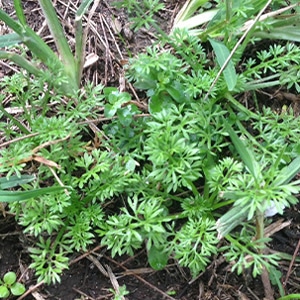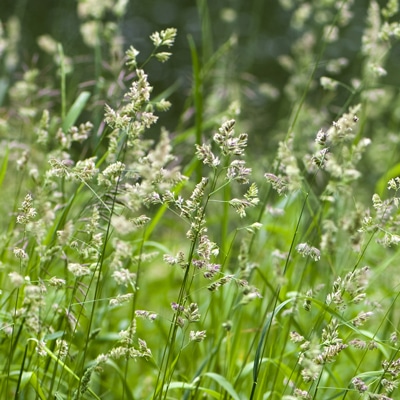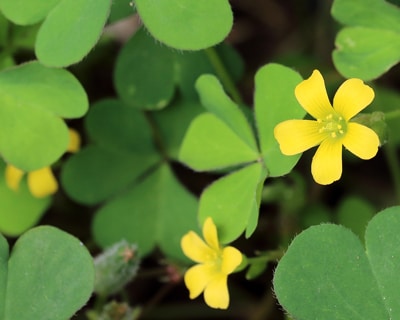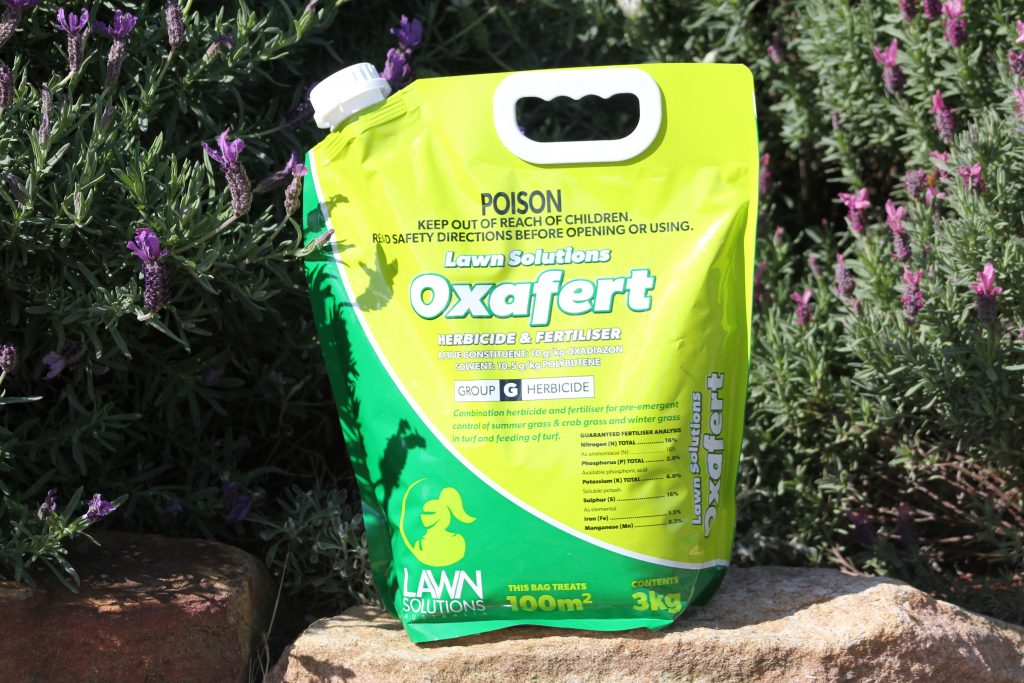Weed Out Those Winter Weeds
Your Simplified Guide to Identify and Kill Winter Weeds (Plus, the Best Winter Lawn Weed Killer)
If they haven’t already, those pesky winter weeds will start to pop up over the next few months. It’s important to treat them as quickly as possible to reduce stress on your lawn. However, to best eradicate winter weeds, you need to know what kind of weed it is.
Let’s go through some common winter weeds as well as how to get rid of them easily (and, better yet, stop them from appearing in the first place).
Do weeds grow in winter?
The cold extremes of winter can be tough for your lawn. As it won’t be getting enough sunlight, it’ll likely go into semi-hibernation. While some weeds that are more commonly found during Summer also struggle in the winter, winter weeds have adapted to grow and thrive in these harsh conditions.
As your lawn is already in its dormancy, or struggling with less sunlight, these winter weeds can quickly take over and consume vital nutrients that your lawn needs to thrive.
But how do those weeds get into your yard in the first place?
Weeds spread in a couple of ways, depending on what type of weed it is.
Seeds
Almost all types of weeds will seed at some point during their lifecycle. Most of the time these seeds will be brought into your lawn in the wind, on your clothing, your pet’s fur or in bird droppings.
And, if a weed has been in your yard before and had the chance to seed, they could be hiding in your soil. Weed seeds can remain dormant in the soil for years, and in some cases, for decades. If you have the same weed reappearing each winter, despite your best effort, it’s likely there are a bunch of dormant seeds in your soil.
This is when weed prevention, such as Oxafert, becomes the easiest way to stop reoccurring weeds in their tracks.
Roots
We all know how important it is to remove the roots of a weed when we are hand-pulling them. This is because perennial lawn weeds will spread with their roots as well as by seed. This is one of the key differences between annual and perennial lawn weeds and makes perennial weeds much harder to kill. They also grow faster and, if left unchecked, can quickly take over your lawn.
While you can’t always stop weeds getting into your yard, you can prepare for them.
3 common types of winter weeds to watch out for
Not all weeds will appear during winter. Just as most plants will require a certain soil temperature to sprout, weeds are the same.
However, your most common winter weeds including Wintergrass, Bindii and Creeping Oxalis. Onionweed and sedge weeds such as Nutgrass may also make an appearance but are less common.
 Winter Grass weed
Winter Grass weed
Winter Grass is a particularly pesky weed. In fact, it’s a downright nuisance! If it has the chanced to drop its seeds, it will come back next winter, and it will come back twice as bad. Winter Grass will start germinating during May and will start to emerge late May and through June.
This weed can be quite difficult to spot if you don’t know what you’re looking for. It has soft, drooping leaves and grows in small tufts. If you spot a patch of grass that doesn’t look the same as the rest of your lawn, it’s best to remove it as quickly as possible as it could well be Winter Grass. Once its triangular shaped seed heads do appear, Winter Grass is much easier to spot but it will also mean that it’ll reappear next year.
Bindii
Bindii is typically associated with Spring, as it’s well known for its prickly seed pods. However, this one actually starts in Winter. To avoid issues in Spring, it’s best to take care of Bindii as it emerges in winter.
Before it reaches maturity, Bindii is a low-growing weed with a compact rosette growth habit. It will produce small yellowish flowers in early spring, which then form the spiky seed heads we all know.
 Creeping Oxalis
Creeping Oxalis
Creeping Oxalis may look sweet and innocent, especially once it flowers, but if left to run rampant, it will take over your lawn – and quickly.
As it is a perennial weed, it spreads with both its roots and its seeds. It’ll run along the surface of your soil and produce more roots as it spreads. Then once it matures, its seed pod will dry out and then explode, spreading even further.
Creeping Oxalis has green, heart-shaped leaves, similar to the clover, and will produce small bright yellow flowers. These will have five petals and will be about 3-4mm in diameter.
Identifying weeds early is essential to stopping their spread. The last thing any of us would want is to spend a huge amount of effort getting rid of weeds, only to have to do it again the next year. However, if you do notice them too late, there are ways to prevent their reappearance.
How to prevent winter weeds
If you noticed weeds appear in your lawn last year, it’s always best to try and prevent them from emerging again this year. To do this, use a pre-emergent herbicide, such as Oxafert.
Pre-emergent herbicides work by forming a barrier at soil level which prevents seeds from germinating. This means it will only work if it’s applied before weeds become seedlings, but it will last around 3 months, getting you all the way through winter.
If you have Winter Grass weeds reappearing year after year, Oxafert is a particularly effective way to prevent Winter Grass from growing and spreading further in your lawn.
Pre-emergents work on both broadleaf and annual weeds and should be applied much like a standard fertiliser. Sprinkle it across your lawn, following the packet instructions, and then thoroughly water it in. Not only is pre-emergent easier to apply than herbicides, it’s also better for your lawn’s health. Its versatility means you can use it for your home, on fairways, golf tees and sports fields, it even has fertiliser mixed through to help give your lawn a weed and feed boost.
You should only use pre-emergents on established lawns. Lawns that are still new may have trouble with root growth if a pre-emergent is used. After establishment, however, pre-emergents won’t affect your lawn’s root growth in any way.
How to kill winter weeds already in your lawn
Using a pre-emergent is great, except that it doesn’t help us if the weeds are already growing in our lawn. If a weed has shallow roots, you can easily hand-pull it without leaving any roots behind. However, other weeds may require a post-emergent herbicide to properly get rid of them.
Note: Always make sure to read the herbicide instructions and check that it’s suitable for your lawn variety (some herbicides can be harmful to buffalo lawns).
Winter Grass weed killer
Winter Grass is an example of a weed that you can easily hand pull. It doesn’t have particular deep roots or runners and grows in clumps. However, if it is a large infestation or you don’t have the time to pull out each clump, you may wish to use a herbicide.
To control Winter Grass you need a stronger weed killer than other types of weeds, but Amgrow Winter Grass Killer will do the job. This particular weed killer is safe for Buffalo lawns but should be avoided on the Kikuyu variety.
Herbicide for winter weeds

Creeping Oxalis can also be controlled in a similar way to Bindii weeds.
How you control other weeds that sneak into your lawn will depend on what sort of weed it is. After you identify it, you’ll have a better idea of the best control method for that weed.
DNA Certified Sir Walter Buffalo Lawn in winter
One of the great things about DNA Certified Sir Walter lawns is its naturally dense growth habit. A healthy Sir Walter lawn will usually outcompete weeds and tends to cope better than other lawns through winter.
Along with better weed resistance, Sir Walter lawns will keep their colour for longer through winter and will bounce back quickly after severe weather conditions.
Australia’s favourite lawn will grow and thrive in just about any condition. In full sun, shade, drought or extreme heat, Sir Walter DNA Ceritified Grass has the upper hand. If you’re looking for a grass that resiliant as well as soft, Sir Walter turf is perfect for you.

read more!
recent posts
Keeping Your Lawn Green and Healthy During the Summer Heat
Discover the best grass options for your lawn with our complete guide. Make informed choices for a lush, healthy yard. Read more to find your ideal grass!
Summer Lawn Weeds: Prevention and Management
Discover the best grass options for your lawn with our complete guide. Make informed choices for a lush, healthy yard. Read more to find your ideal grass!
The Ultimate Watering Guide for Summer Lawns
Discover the best grass options for your lawn with our complete guide. Make informed choices for a lush, healthy yard. Read more to find your ideal grass!
Lawn Care Products for Every Season
Each season brings its own challenges – weeds in autumn, slow growth in winter, pests in spring, heat stress in summer. Here’s how the turf pros tackle each season, and the products we recommend for a healthy lawn all year round.

 Winter Grass weed
Winter Grass weed Creeping Oxalis
Creeping Oxalis




